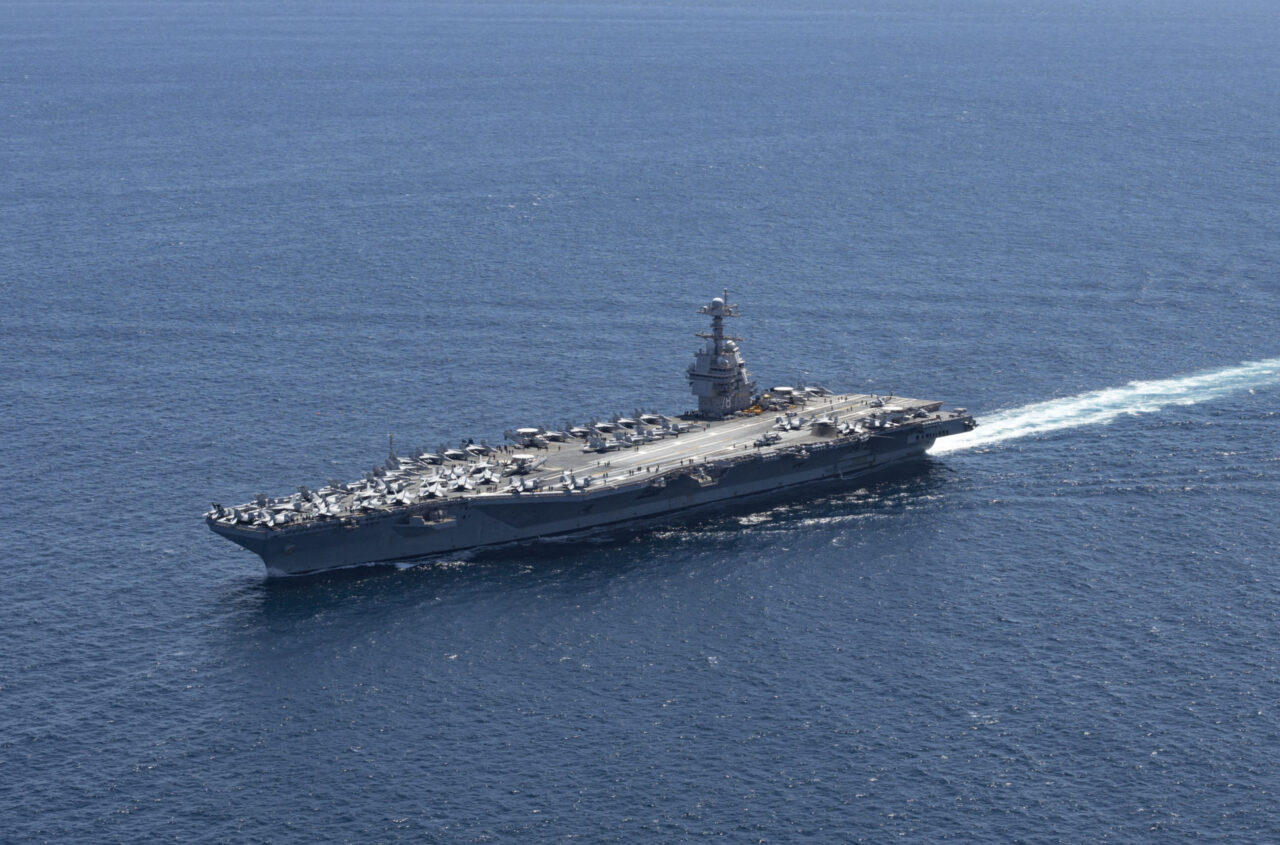The USS Gerald R. Ford, the US Navy’s latest and most advanced aircraft carrier, is currently operating in the Mediterranean Sea as part of its deployment to the US European Command area of responsibility. The carrier, which is the lead ship of the Ford-class, transited the Strait of Gibraltar alongside several Spanish Navy warships, emphasizing the ongoing collaboration between the US and Spanish navies.
Cmdr. J David Garcia, the commanding officer of the Spanish frigate ESPS Canarias, remarked on the significance of this joint operational activity. He stated, “This operational activity in the Strait of Gibraltar shows the solid commitment of Spain as a strong ally in a key access point to the Mediterranean Sea.” Both navies have a history of working together, primarily from the Rota Naval Base, the main US-Spanish naval station in Southern Europe, established in the 1960s. Garcia noted that this collaboration enhances their shared defense efforts.
Currently, it is unclear whether the USS Gerald R. Ford will continue its operations in the Mediterranean or head towards the Red Sea. Since the escalation of conflict in Israel by Hamas in October 2023, the US has maintained a significant naval presence in the Red Sea. Notably, the USS Harry S. Truman, a Nimitz-class aircraft carrier, left the region in May, and no other carrier strike group has since taken its place. The USS Carl Vinson Carrier Strike Group was previously deployed to the North Arabian Sea and is now supported by the Nimitz-class carrier strike group.
Overview of the USS Gerald R. Ford
The USS Gerald R. Ford (CVN-78) is named after the 38th president of the United States and is the first ship of its class to be actively commissioned in the Navy. The vessel’s keel was laid down in 2009, and it was formally commissioned in 2017. The Navy plans to eventually acquire a total of 10 Ford-class carriers to replace the aging Nimitz-class ships at a one-for-one rate. While the Nimitz carriers have provided formidable capabilities to the US Navy for over five decades, the Ford-class carriers incorporate cutting-edge technologies that give them a distinct advantage.
One of the most significant advancements on the USS Gerald R. Ford is the Electromagnetic Aircraft Launch System (EMALS). Unlike the traditional steam piston system used in older carriers, EMALS employs a linear induction motor for aircraft launches. This innovative system, combined with the Advanced Arresting Gear (AAG), allows the Ford-class ships to launch 25 percent more sorties and generate three times the electrical power compared to their predecessors.
The USS John F. Kennedy, the next Ford-class carrier, is set to join the fleet in the near future. Until then, the US Navy will continue to rely on its existing Nimitz-class carriers to fulfill its maritime deterrence strategy.
In summary, the USS Gerald R. Ford’s operations in the Mediterranean highlight the ongoing commitment of the US Navy to its allies and its strategic objectives in a region of increasing geopolitical significance. As the situation evolves, the decisions regarding its deployment will undoubtedly reflect the broader security landscape.
